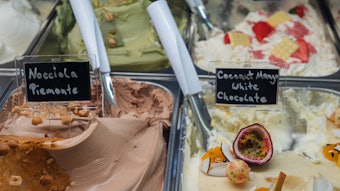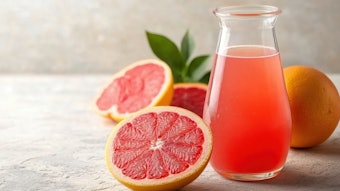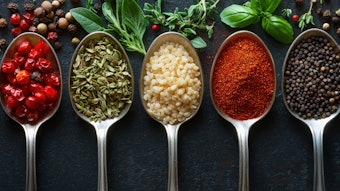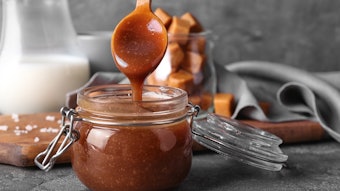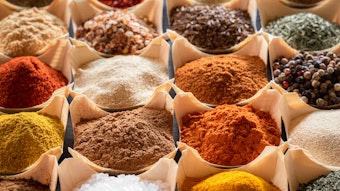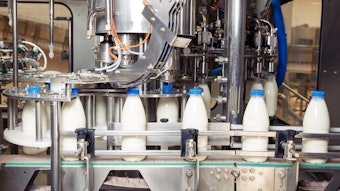
We all have our biases in our choices of flavor ingredients, sometimes rational, sometimes not. I have a strong bias in favor of unsaturated chemicals. They tend to be more characterful and interesting. As with many biases, I also have a feeling that the more double bonds, the merrier. β-Damascone (FEMA# 3243, CAS# 23726-91-2) would seem to be a case in point. Damascenone has one more double bond, so it must be more characterful than β-damascone. Perhaps I am also influenced by the glorious abundance of damascenone in the end products of fermentation?
In reality, β-damascone is equally useful. It has an interesting cedar twist along with a superb damson character. It is more stable than damascenone and much more economical. The list of uses is so long that it might be easier to list flavors that it does not work in.
Note that the dose rates given throughout this article are the levels suggested for use in flavors intended to be dosed at 0.05% in ready-to-drink beverages or in a simple bouillon.
Orchard Fruit Flavors
Apples: The ideal damascone for apple flavors was α-damascone but β-damascone serves almost as well at 200 ppm.
Apricot: Fresh apricot flavors only need a modest addition of β-damascone, around 30 ppm. Dried apricot flavors, on the other hand, are better with 50 ppm.
Cherry: β-Damascone is not an essential ingredient in cherry flavors, especially in those dominated by benzaldehyde. Nevertheless, 100 ppm does add authenticity to more naturally oriented cherry flavors.
Damson: Not surprisingly, damson flavors can make good use of high levels of β-damascone. A reasonable place to start is 800 ppm.
Nectarine: Nectarine flavors are at the other end of the scale, with 20 ppm of this ingredient being more than adequate.
Peach: This ingredient adds depth and richness to peach flavors, typically starting at around 50 ppm.
For the full article, please check out the Perfumer & Flavorist+ March 2022 issue.

